
The Elachistidae are a family of small moths in the superfamily Gelechioidea. Some authors lump about 3,300 species in eight subfamilies here, but this arrangement almost certainly results in a massively paraphyletic and completely unnatural assemblage, united merely by symplesiomorphies retained from the first gelechioid moths.

Gelechioidea is the superfamily of moths that contains the case-bearers, twirler moths, and relatives, also simply called curved-horn moths or gelechioid moths. It is a large and poorly understood '"micromoth" superfamily, constituting one of the basal lineages of the Ditrysia.

Copromorphidae, the "tropical fruitworm moths", is a family of insects in the lepidopteran order. These moths have broad, rounded forewings, and well-camouflaged scale patterns. Unlike Carposinidae the mouthparts include "labial palps" with the second rather than third segment the longest. With other unusual structural characteristics of the caterpillar and adult, it could represent the sister lineage of all other extant members of this superfamily. The genus Sisyroxena from Madagascar is also notable for its unusual venation and wing scale sockets.
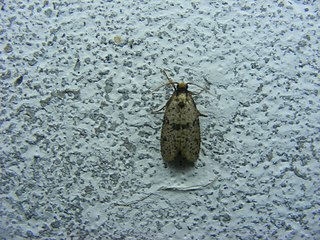
Eriocottidae or Old World spiny-winged moths is a family of insects in the order Lepidoptera whose position relative to other members of the superfamily Tineoidea is currently unknown. There are two subfamilies, Compsocteninae and Eriocottinae.
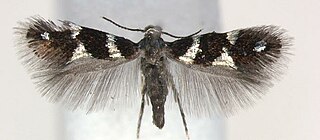
The Heliozelidae, commonly known as shield-bearer moths, are a family of small, day flying monotrysian moths distributed worldwide. The larvae of most heliozelid species are leaf miners who cut distinctive shield-shaped cases from the surface of the host leaf, hence the common name. Some species are considered pests of commercial crops such as grapevines, cranberries, and walnuts. The taxonomy of this family is poorly understood.
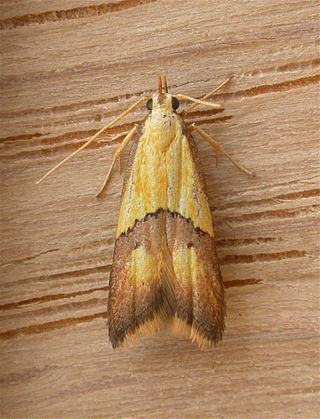
The Lecithoceridae, or long-horned moths, are a family of small moths described by Simon Le Marchand in 1947. Although lecithocerids are found throughout the world, the great majority are found in the Indomalayan realm and the southern part of the Palaearctic realm.
Prototheora is a genus of moths. It is the only genus of the Prototheoridae, or the African primitive ghost moths, a family of insects in the lepidopteran order, contained in the superfamily Hepialoidea. These moths are endemic to Southern Africa.

Mnesarchaea is a genus of "New Zealand primitive moths" in the family Mnesarchaeidae. This genus is endemic to New Zealand.

Helcystogramma is a genus of moths in the family Gelechiidae. The genus was erected by Philipp Christoph Zeller in 1877.

Asaphodes is a genus of moths in the family Geometridae erected by Edward Meyrick in 1885. This genus is endemic to New Zealand and species within this genus are found throughout New Zealand including the North, South and Stewart / Rakiura Islands.

Macrobathra is a genus of moths in the family Cosmopterigidae. Most species are endemic to Australia.
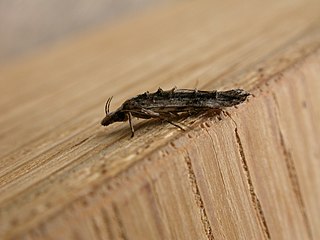
Trachydora is a genus of moths in the family Cosmopterigidae.
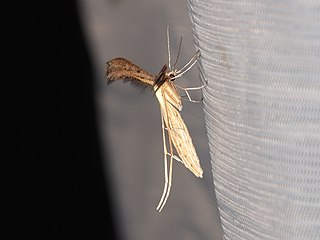
Pterophorinae is a subfamily of moths in the family Pterophoridae.
Microcolona is a genus of moths of the family Elachistidae described by Edward Meyrick in 1897.

Xyloryctidae is a family of moths contained within the superfamily Gelechioidea described by Edward Meyrick in 1890. Most genera are found in the Indo-Australian region. While many of these moths are tiny, some members of the family grow to a wingspan of up to 66 mm, making them giants among the micromoths.
The Chrysopeleiinae are a subfamily of the Cosmopterigidae, although some authors treat it as a full family, the Chrysopeleiidae.
Eumenodora encrypta is a moth in the family Xyloryctidae. It was described by Edward Meyrick in 1906. It is found in India.
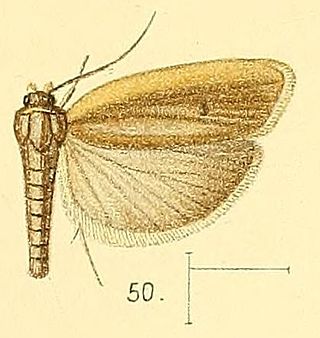
Stenoma is a genus of moths. The type species is Stenoma litura, which was described by Philipp Christoph Zeller in 1839.
Stenoma eumenodora is a moth in the family Depressariidae. It was described by Edward Meyrick in 1937. It is found in Argentina.

Tingena is a genus of the concealer moth family (Oecophoridae). This genus is endemic to New Zealand.












